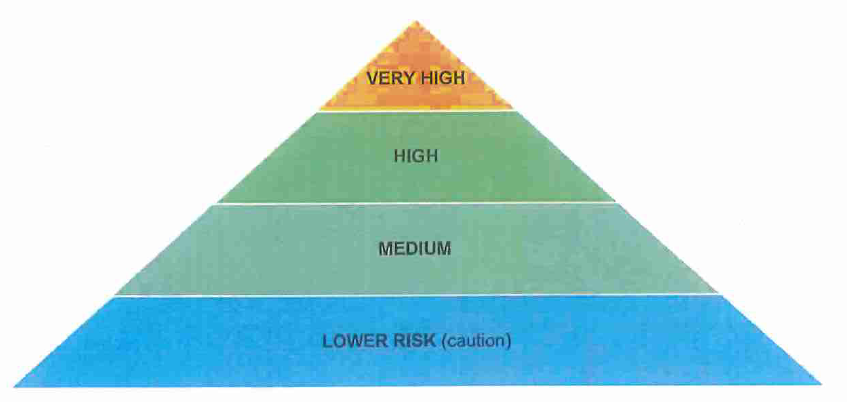


Mine Health and Safety Act, 1996 (Act No. 29 of 1996)NoticesGuideline for the Compilation of a Mandatory Code of Practice for the Prevention, Mitigation and Management of COVID-19 outbreakPart C: Format and Content of the Mandatory COP8. Key elements to be addressed in the COP8.1 Risk assessment |
| 8.1.1. | In terms of section 11 of the MHSA, the employer must assess and respond to risk. |
| 8.1.2. | The employer is required to conduct a risk-based assessment covering all workings at mines and the risk assessment should be described with reference to but not limited to: |
| 8.1.2.1. | All sources of SARS-CoV-2 infection transmission. |
| 8.1.2.2. | Health effects associated with exposure to SARS-CoV-2. |
| 8.1.2.3. | Nature of the l<ey workplace operations and activities that pose all potential! risk of SARS-CoV-2 transmission. |
| 8.1.2.4. | Occupations and number of employees who are likely to be exposed to and spread the SARS-CoV-2. |
| 8.1.2.5. | Mines essential occupations or critical skills that might be impacted by SARS-CoV-2 transmission. |
| 8.1.2.6. | The risk of vulnerable employees to SARS-CoV-2 while at work. |
| 8.1.2.7. | Control measures in place, i.e. engineering, administrative, PPE, etc. |
| 8.1.2.8. | De-densification of employees on transport modes and other spaces. |
| 8.1.2.9. | The additional control measures required to be instituted in order to reduce exposure and the spread of SARS-CoV-2, such as the review of human resource policies around business travel, sick leave and other related policies to account for SARS-CoV-2. |
| 8.1.2.10. | Frequency of any ongoing monitoring to assess the effectiveness of the controls mentioned above. |
| 8.1.2.11. | The mine's risk assessment methodology to take cognisance of the WHO classification of the risk of SARS-CoV-2 infection into four risk groups, whicll are illustrated by the below figure: |

| i. | Very high exposure risk |
High potential for exposure to known or suspected sources of SARS-CoV-2 during specific medical, post-mortem, or laboratory procedures.
| ii. | High exposure risk |
High exposure risk jobs are those with high potential for exposure to known or suspected sources of SARS-CoV-2.
| iii. | Medium exposure risk |
Medium exposure risk jobs include those that require frequent and/or close contact with i.e., within 2 meters of people who may be infected with COVID-19, but it is unknown.
| iv. | Low exposure risk |
Low exposure risk jobs are those that do not require contact with people known to be or suspected of being infected with COVID-19 nor frequent contact (within 2 metres) with the general public.
NOTE: The attached annexures 1 - 3, can be utilized by employers for the purpose of conducting COVID-19 risk assessment |
| 8.1.3. | Scientific and evidence-based approach |
In implementing any solution driven measure, the employer must aim to apply the best available evidence gained from scientific methods for decision making in preventing exposure SARS-CoV-2.
| 8.1.4. | Review of the risk assessment |
| 8.1.4.1. | The employer must review the risk assessment regularly and whenever circumstances arise or change at the mine that could have an impact on the original assessments and the risk of contracting COVID-19 and at least in the following instances when: |
| i. | Outcomes of local outbreaks or community surveillance become known to the mine. |
| ii. | Outcomes of medical surveillance programmes indicate the need for it. |
| iii. | A MHSA section 11.5 investigation and/or any other investigation(s) indicates the need. |
| iv. | New or revised legislation is introduced. |
| v. | New mining methods are introduced. |
| vi. | Process changes are introduced (e.g. in process plants). |
| vii. | New types of machinery are introduced. |
| viii. | New epidemiological, public health and medical information on the infection, spread of, symptoms or any other relevant information comes to light in respect of the pandemic that may influence the risk assessment. |